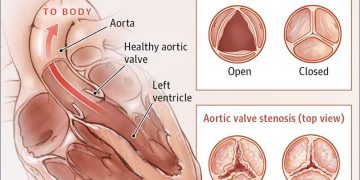Your menstrual cycle consists of four key phases, some of which overlap with one another. During these phases, your body undergoes some pretty amazing changes, each preparing you for the next part of your cycle.
The Menstrual Phase
The first phase of your cycle is called the menstrual stage. During this time, your body sheds its uterine lining, which is made up of a combination of blood, mucus and tissue – otherwise known as your period. Most women have their period for between 3-7 days long.
The Follicular Phase
The following phase is called the follicular phase. During this stage, hormones signal your ovaries to produce follicles, each of which contains an egg waiting to mature. Usually, only one egg will mature and the rest will be reabsorbed into your body. On rare occasions, two eggs can mature. In both cases, only the healthiest eggs reach maturity.
The Ovulation Phase
The next phase is called ovulation. During ovulation, your ovary releases the mature egg, sending it down the fallopian tube towards your uterus. When it reaches your uterus, you’ll be able to fall pregnant if the egg comes into contact with sperm. If the egg isn’t fertilised, the egg will eventually dissolve.
The Luteal Phase
The final phase of your menstrual cycle is called the luteal phase. During this phase, hormones will once again rise to promote the thickening of your uterus, vital in order to create a good environment should you wish to nurture and grow an embryo. If you don’t fall pregnant, these hormones will fall, causing your uterine wall to shed once more during the menstrual phase.
What Causes Menstrual Cycle Changes and When Should I Worry?
Your period won’t always be as regular as clockwork, and often a change in your cycle isn’t a cause for concern. Many things can affect the length of your cycle, some of which may be out of your control and some of which may be a little more directly influenced by your daily habits.
Sure, your menstrual cycle can change due to an underlying health condition. However, it can also be due to things like chronic stress, entering or leaving puberty, maturing or menopause.²,⁴
So before assuming the worst, it could be helpful to take everything in your life into consideration first. The best way to navigate when changes in your menstrual cycle should be a cause for concern or not is by tracking them, as well as finding what’s normal for you as an individual. This way if anything seems too out of the ordinary, you can notify your health practitioner right away.
How Can I Ease Any Menstrual Symptoms I May Experience?
During or just before your period, you may experience some pain and discomfort. Some of these symptoms include lower back pain, headaches, nausea, mood swings, insomnia, bloating and pelvic pain.⁶
Depending on your symptoms and their severity, you may be able to ease them at home without using any medication. If your pain or discomfort becomes unbearable, always consult your doctor before taking any medicine.
Heat therapy, like having a warm bath or placing a hot water bottle over your belly, can be beneficial at easing pelvic pain and lower back pain.⁶ Eating healthy foods like unprocessed fruits and vegetables can also be beneficial, as well as drinking plenty of water.⁶
You may also wish to avoid too much alcohol, sugar, salt and caffeine during and leading up to your period, as these foods can lead to more inflammation, causing you more pain.⁶ Last but not least, be sure to get plenty of rest in order to best support your body during each phase.⁶
Which Sanitary Product Is the Right Fit for Me?
With so many sanitary choices out there, it can feel overwhelming trying to decide which sanitary option should be your go-to.³ Fortunately, you don’t have to stick to one kind during your menstrual cycle, nor do you have to keep using the same thing should you find it isn’t a good match.
Sanitary pads, tampons and pantyliners all have different advantages. For example, tampons might be better for certain activities like swimming, or when you’re looking for a more discrete option.
Pantyliners can be used on their own when your flow is very light, or in conjunction with tampons for extra support. Pads might be a better option for those who find tampons uncomfortable or prefer to bleed freely.
In addition to choosing which type of sanitary item works best for you, you’ll also want to find the perfect match that suits your flow.
For example, if you have a heavier flow, you’ll want to opt for a tampon or pad that can effortlessly support you without any concern about leaks. You might even wish to alternate your sanitary items at different times of your cycle, using a combination of light and heavy flow options.
At the end of the day, what’s most important when choosing the right match for you is that you feel comfortable, protected and free to enjoy your life. What works for someone else may not necessarily work for you, so have fun exploring your options.
Follow – https://healthhuff.com for More Updates






































